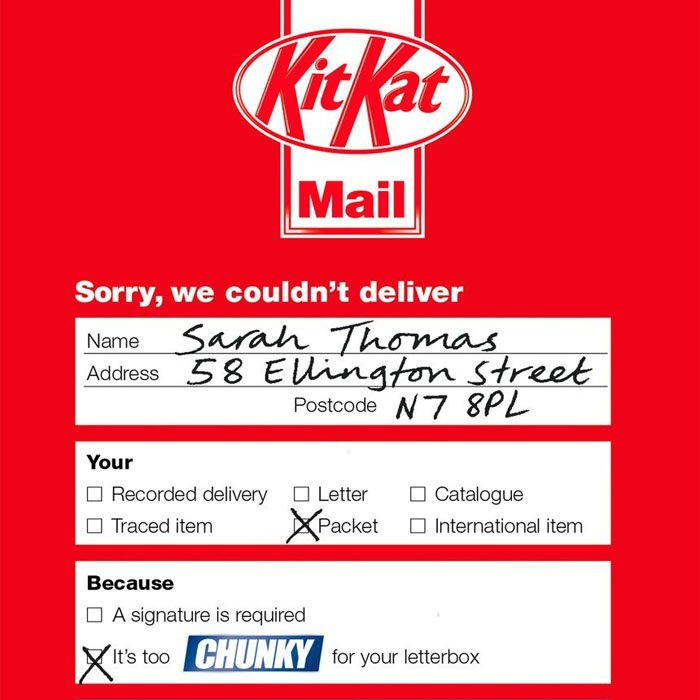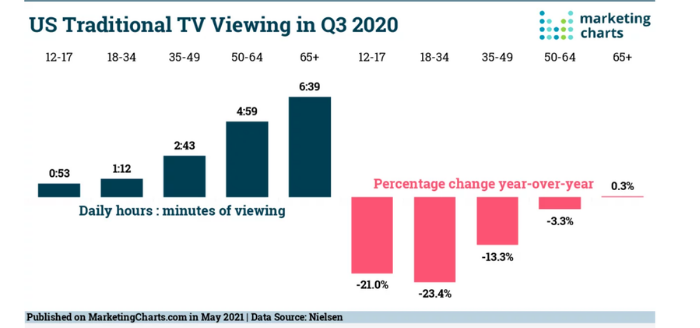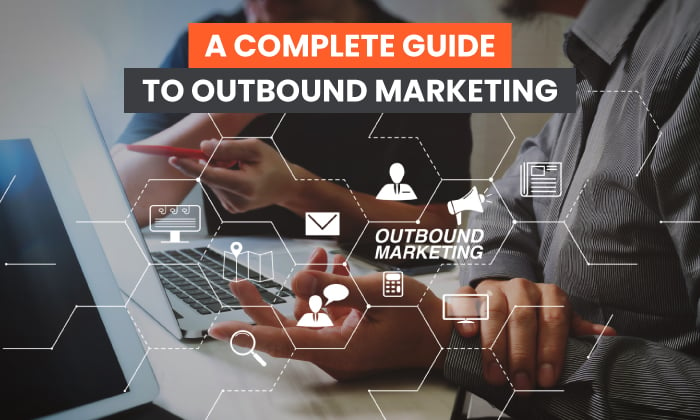Is outbound marketing right for your business?
How do you decide which strategies are going to help you grow your brand?
If you’ve got questions about outbound, then you’ve come to the right place.
What Is Outbound Marketing?
Outbound marketing is where you (the business) initiate conversations with your customers to attract them to your brand. For example, TV commercials, cold calls, paid ads, and direct mail are all examples of outbound.
Inbound marketing, on the other hand, is when your customer initiates a conversation with you. For example, they visit your website, read an ebook, or download a white paper.
The goal for outbound marketing is to actively build authentic relationships through engagement, targeted communications, and putting your company in the right place at the right time.
There’s no denying that inbound marketing has grown in popularity in recent years (and with good reason, as it produces tremendous results.) However, outbound still takes up 90 percent of marketing budgets due to the high cost per outreach.
To improve your ROI in outbound, you need to allocate your budget to the methods that work for your brand. Below, we’ll cover some strategies to try, but first, let’s talk about its relevancy.
Is Outbound Marketing Still Relevant Today?
Every business owner loves to cut costs. When you, as a consumer, immediately delete a sales promotion email from your inbox without looking at it, you might wonder why that business would continually persist with an outbound strategy.
The likelihood is, they’ve built a huge mailing list and their promotions go to every single email address—paying no heed as to whether each customer is directly their target audience or not.
Why? They’ve invested in building a mailing list, and outbound marketing is still an extremely useful tool. It’s amazingly good at driving brand awareness (as long as your emails aren’t repetitive enough that a customer ends up hating you), maintaining brand relevance, and introducing products to new audiences. It helps you be at the forefront of your customer’s mind, for recommendations, word of mouth marketing, and lead generation.
Inbound marketing is great, and especially for smaller and low-budget businesses, but if customers don’t know your products exist in the first place, they can’t search for something they aren’t aware of.
Outbound marketing guarantees you reach people. You won’t be shouting into the void. Blogs are great for SEO and hoping Google’s Algorithm will take pity on you, but when you pay for a TV ad in a half-time break of a popular show: you know it’s going to be seen.
It can be expensive, but, when done correctly, it still provides a good ROI and is still relevant today as a complement to inbound marketing.
7 Outbound Marketing Strategies to Try
Most marketing success comes through a combination of different strategies. Whether it’s inbound or outbound, there are lots of different ways to reach your target audience, and often it will take lots of different strategies to achieve your goals.
Here are seven outbound sales strategies you can use to boost your marketing.
Outbound Marketing Strategy Number #1: Cold Email
Email seems to have been around a long time now, but it’s still bringing in an incredible ROI for marketers.
We’re all accustomed to receiving newsletters from websites, but we tend to forget about an important part of outbound strategy: cold email.
Cold emails are unsolicited emails you send out to prospects. You’re initiating the interaction, so it firmly fits in with the principles of outbound marketing.
“Everybody hates receiving unsolicited emails, spam is the worst.”
Well, what if your cold emails didn’t feel like unsolicited emails? What if they were highly personalized, respected your customer’s time, and actually offered value to them beyond a product that can fix “all of life’s problems?”
Outbound marketing doesn’t have to be pushy, impersonal, sales-based spam. It can have all the creativity of inbound marketing. Using your understanding of your target audience, you can craft cold emails that get responses and create leads.
Here are some things you will want to concentrate on with your cold emails:
- cleaning your list: make sure you’re reaching live emails
- engaging subject lines: earn the click
- personalization: make people feel like they’re not the millionth person to receive this email
- offering value: you want something from them, what can you offer in return?
- A/B test everything: subject lines, signatures, CTA’s, interval between each email, the time you send each email, and, of course: the copy itself
Small details make a big difference, for example, 30 percent of people open an email based on the subject line, so make sure you’re optimizing every aspect of your outbound marketing.
Outbound Marketing Strategy Number #2: Direct Mail
First, I recommend “cutting edge technology” with emails, and now I’m telling you to send people letters through the mail?
Well, yes!
So much of our lives might have moved online, but we still exist away from the internet and we still receive mail. As it turns out, we still enjoy seeing something in the mailbox with our names on it, and this is an effective way of using outbound marketing.
This scientific study found brand recall is 70 percent higher among participants exposed to direct mail than an online ad. It may not have the fancy analytics, and you may not be able to put a GIF on it, but it’s certainly a good way to gain traction for your brand, and can still be relevant to your ethos, voice, and how you want to present yourself.
Just take a look at KitKat’s amusing example:

Estimates for the average ROI from direct mail vary a lot, and, like with most outbound marketing, it’s all about how good your campaign is.
With direct mail, it’s important to:
- Remain targeted with your approach and segment people based on past purchases, location, demographics, etc.
- Be creative and make your ad stand out amongst the crowd.
- Include a way to track the success of the campaign (unique discount codes are a great way to see which customers are responding).
It might not seem like it fits with the digital age, but direct mail is still a useful outbound strategy.
Outbound Marketing Strategy Number #3: Search Ads
Paid search ads can be seen as a cross between inbound and outbound marketing. While the targeted user has likely actively searched for information related to your products, you’re still artificially placing your brand in front of them in a way more reminiscent of outbound marketing.
Search ads are great for immediate success.
With SEO, you write an article and watch as the search engines gradually start to rank it. When it does start to bring in traffic, it’s an amazing tool because you’re not paying for clicks, but it takes time and there’s no guarantee of success.
When you invest in paid search ads, you give your brand an immediate presence in the SERPs, almost guaranteeing you traffic. Of course, you will be paying for each click which means the most important thing with search ads is optimization.
Not only do your ads have to be on-point, but so do your landing pages (here’s how I make sure my landing pages are converting).
Clearly set out what you’re trying to achieve with your paid ads and make sure everything is streamlined toward driving action from your customers. Small issues such as a clunky checkout page can hurt your conversion rate and make a big difference to your ROI on your search ads.
The average conversion rate for search ads on the Google network is 4.4 percent, but the hard work you put in might see you push well beyond this.
Here’s my “Guide to Google Ads” to help you out.
Outbound Marketing Strategy Number #4: Social Media Ads
Billions of people are on social media every day. The average daily usage of social media is two hours and 25 minutes.
In marketing, we talk a lot about reaching your customers where they’re hanging out, and the data shows this is overwhelmingly on social media. If you’re not running social media ads, then you’re missing out.
Social media is becoming more and more “pay to play,” increasingly making it an outbound tool. Paid social media is:
- more cost-effective than organic social media
- increases brand awareness
- boosts reach
The average organic post reaches just five percent of your followers, so you need a huge following to make a difference with organic social media. Paid ads on the other hand allow you to immediately reach a highly targeted audience.

One of the most powerful aspects of advertising on platforms like Facebook, Instagram, TikTok, and LinkedIn is targeting. These companies have an incredible amount of data on their users and you can use this to be extremely targeted, serving your ads to the people they’re going to have the most impact on.
Outbound Marketing Strategy Number #5: Trade Shows/Events
Marketing may have shifted focus from the physical world to the digital one, but that certainly doesn’t mean getting out and meeting people is a dead art. One of the best ways to get your brand in front of a targeted audience is by attending a trade show.
This can represent a large upfront cost (on average it costs $100-$150 per square foot of floor space), but the exposure and new connections you make can be well worth it.
Maintaining brand relevance is something that takes constant commitment, and having a stand at a major trade show is one of the ways you can do this. Just think of any major trade show, and you’ll expect the biggest brands to be there. For example, what would an international farming show be without John Deere?
It may seem like these companies are so big it doesn’t matter whether they attend a trade show, but they recognize that to remain relevant you’ve got to be visible.
When planning for a tradeshow, make sure you’re setting goals and managing your budget appropriately.
Outbound Marketing Strategy Number #6: Cold Calls
Outbound doesn’t always have the best reputation and cold calls certainly fit this picture. Despite this, the inescapable reality is cold calling works for many businesses.
Sales and marketing are still about reaching new audiences and starting conversations and that’s exactly what cold calling allows you to do. Of course, there are good and bad ways of doing this, and you need to consider your approach carefully.
Again, it’s easy to look at cold calling and think it’s all about numbers. Sure, outbound relies on volume, but the most important aspect is still quality, in this case, the quality of the conversations you can have.
This is why there’s a push away from scripted sales pitches towards approaches like SPIN selling where the focus is on helping the customer to solve their problems (if you’ve read my inbound marketing articles then you know this is something I talk about all the time).
If you’re thinking about using cold calling as part of your outbound strategy then keep these important points in mind:
- Invest in the right software: this will save you so much time and make you much more efficient.
- Think about your brand image: don’t be pushy, work on growing relationships.
- Research your prospect list: make sure you’re reaching a targeted audience.
- Respect people’s privacy: take people off your contact list when requested.
- Protect the vulnerable: look after your customers, especially the elderly, and put protections in place (such as a 30-day refund guarantee) to allow them to change their minds.
Outbound Marketing Strategy Number #7: TV, Radio, and Print Ads
Online marketing has transformed the way businesses advertise, but traditional advertising is far from dead.
There are lots of online places you can advertise your business and continue to grow your brand. TV and radio ads may require a bigger investment than other forms. like PPC but they still bring in big results.

The average American might spend more than two hours a day on social media, but traditional TV consumption is even higher among the older generations:
- 50-64-year-old Americans watch an average of four hours and 59 minutes of traditional TV each day.
- Over 65s watch a massive six hours and 39 minutes.
Consumption of traditional media might be changing but it’s still there—and therefore it’s still a big opportunity for marketers. Make sure you understand your target demographics and are showcasing your brand with creative messaging and you can still see an excellent return on your investment.
Outbound Marketing Frequently Asked Questions
Outbound relies on the business initiating the interaction whereas inbound marketing relies on the customer searching for your brand.
Social media can be both inbound and outbound. Paid social media ads would be classed as outbound, whereas organic reach is inbound marketing.
Why is outbound marketing effective?
Outbound marketing is often effective because it’s immediate. You’re not waiting for people to find you, you’re putting your brand in front of people and initiating interactions.
No, it is very much alive. Many businesses still use outbound to achieve a good return on their investment.
Examples include paid search ads, social media ads, cold email, cold calls, trade shows, and tv/radio/print ads.
Outbound Marketing Conclusion
Outbound marketing is something that’s still relevant today. It’s a great complement for your inbound marketing and an excellent way to grow your brand.
Marketing is a competitive field, and sometimes you can’t rely on people coming to you, instead, you’ve got to put your name out there and guarantee you’re getting exposure. In these cases, cold emails, search ads, social media ads, trade shows, cold calls, and traditional media ads can make a huge difference.
The most important thing to remember is that many of the same principles of inbound marketing still apply to outbound. You still need to understand your target audience, and you’ve got to be able to provide value and help solve people’s pain points.
If you can successfully do this, then outbound marketing can be an important part of your strategy.
What’s your favorite outbound marketing strategy?

